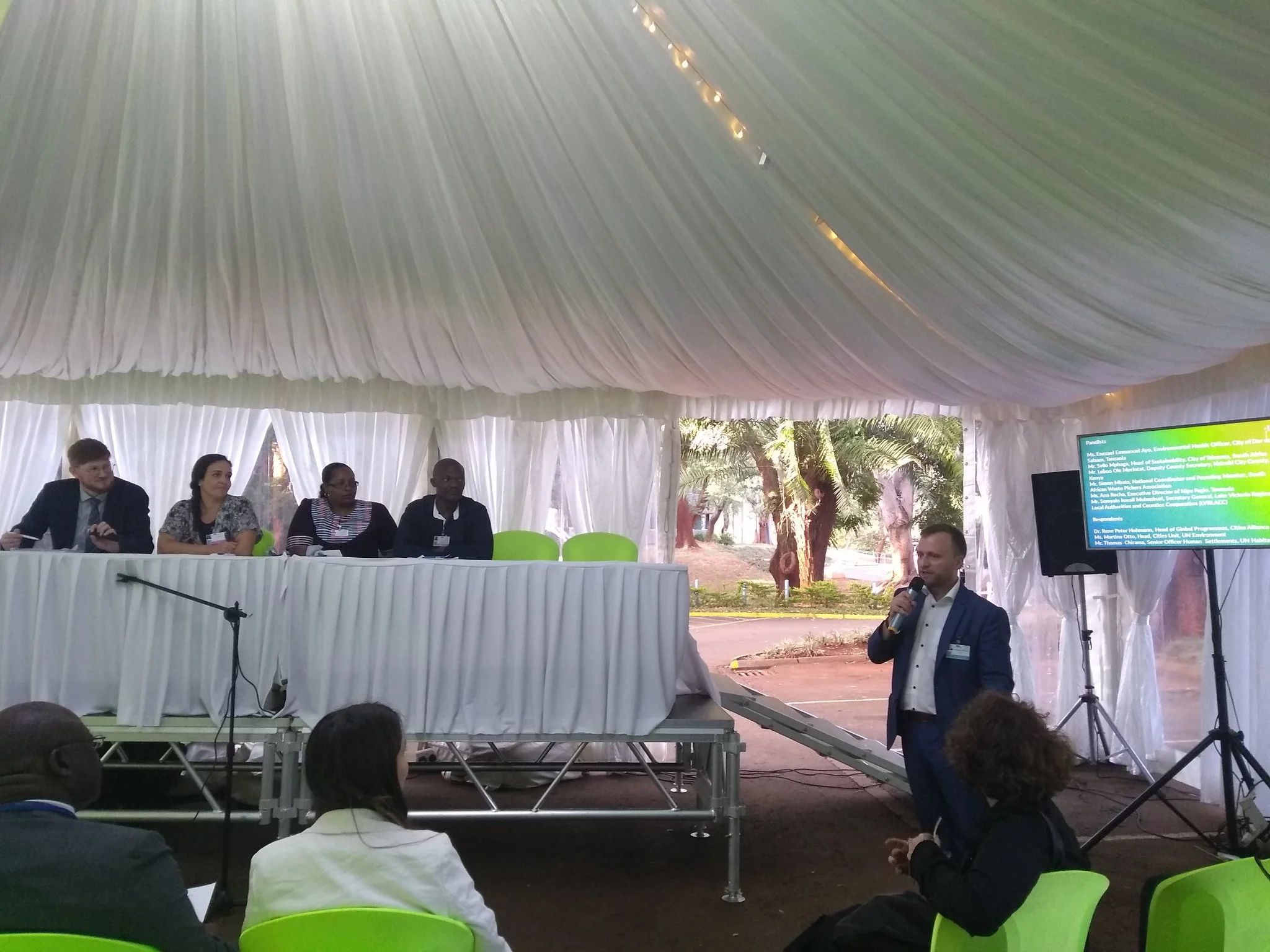The Green Tent is the Civil Society Platform at UNEA-4. The Youth Cafe UNEA Monitor is covering some of the green tent events throughout the week of the Assembly.
Best Practices to Build Capacity in Advancing Sustainable Development through Sustainable Consumption and Production – A Session with the Business and Industry Major Group
In the session with the Business and Industry Major Group, representatives of different industrial sectors discussed how to better work in a world of limited resources.
While steel industry waste is currently about 3.7 percent of inputs, the sector is aiming at being zero waste. There are many uses for steel industry waste: slag can be used for building, process gases for heat and electricity, and chemicals in the chemical industry. Relabeling waste as co-products can help change perceptions that often hamper secondary use.
Policymakers are also pressed to ensure that same requirements are placed on waste products used for a secondary purpose, as are placed on raw products.
The Dairy Sustainability Framework is pushing towards global collaboration for best practices. The dairy industry employs one billion people directly and indirectly,and has six billion customers. Being a major industry that uses resources and emits greenhouse gases, the dairy industry needs continuous improvement and a recognition of the diversity of circumstances to achieve sustainability.
The garment and textile industry has paid much attention to solving problems related to waste water. Lacking education of workers on water treatment can lead to severe biodiversity impact and risk to worker welfare. Although most production facilities operate their own wastewater facilities, these are very expensive and easy to switch off. To address these challenges, the industry is now planning for a coalition across retail brands to harmonize a number of best practices.
Collaboration inside the PVC industry includes producers, suppliers, Government, NGOs, users, etc., working to improve the sustainability of the sector. A series of measurable targets have been established, allowing an evaluation of the contribution of industrial performance to the SDGs. While in 2001, there was virtually zero collection and recycling, by 2017, recycling reached 640,000 tonnes.
This contributes to reduced energy use, as producing virgin PVC requires 70 percent greater primary energy use than recycled materials. The CO2 release saved is measurable. Other improvements within the industry include replacement of harmful chemical inputs, such as lead based stabilizers.
Actions have been voluntary driven. All industry representatives recognized the need for a market-based approach to incentivize both businesses and customers to participate in advancing sustainability.


